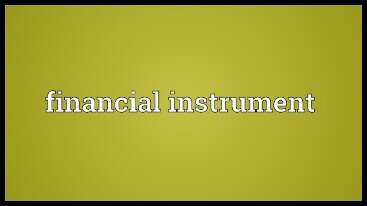What Is a Portfolio?

How much risk you’re able to withstand depends not just on your stomach, but on your finances as well. If you’re early into your investing career, you can ride out a loss better than when you’re older if only because you have more time to recoup your losses. A portfolio is made up of investment accounts and the specific investments within those accounts.
One major hurdle for the buy-side though is in aggregating and optimizing the portfolio trades. It’s cumbersome when shifting portfolio strategy, such as extending duration or going down in credit quality to pick up yield. We hope that your investment advisor (if you use one) has you invested in one or all of the top-ranked mutual funds we’ve reviewed. But if that isn’t the case, it might be time to have a conversation or reconsider this vitally important relationship. You are being directed to ZacksTrade, a division of LBMZ Securities and licensed broker-dealer.
Best Online Brokers for Stocks Under $100
The most important are the invested amount, investor’s risk tolerance and planning horizon. Portfolio investment meaning presupposes that the investor does not actively participate in the management of the company. Foreign portfolio investment is when an investor buys assets in a foreign company. According to portfolio investment definition, it is a passive or a hands-off investment. With portfolio investment, an investor buys assets with the sole purpose of financial gain, without any involvement in the company’s internal decision making. If adding a new investment to a portfolio increases its overall risk and/or lowers its expected return (without reducing the risk accordingly), it does not serve the goals of diversification.
- Asset classes are groups of financial assets, such as shares or bonds, which have been…
- The monthly returns are then compounded to arrive at the annual return.
- While markets inevitably fluctuate, investors typically ride out the downtrends with the expectation that prices will rebound and any losses eventually will be recovered.
- This dedication to giving investors a trading advantage led to the creation of our proven Zacks Rank stock-rating system.
- DRGYX is a Large Cap Value mutual fund, which invests in stocks with a market cap of $10 billion of more, but whose share prices do not reflect their intrinsic value.
It offers a pegged value to the US dollar, making it a popular choice for traders looking to mitigate risk and volatility. When considering including Tether in a crypto portfolio, it is important to carefully evaluate the risks and benefits based on individual goals and risk tolerance. We price action indicators want to clarify that IG International does not have an official Line account at this time. We have not established any official presence on Line messaging platform. Therefore, any accounts claiming to represent IG International on Line are unauthorized and should be considered as fake.
One of them, or a combination of more than one, is sure to meet your needs. Prior to Tradeweb’s advent of Portfolio Trading, market participants executing bulk trades of several bonds in various sizes would need to trade each bond individually. Traders often choose their trading style based on account size, amount of time dedicated to trading, level of trading experience, personality, and risk tolerance. Rebalancing is used to return a portfolio to its original target allocation at regular intervals, usually annually. This is done to reinstate the original asset mix when the movements of the markets force it out of kilter. Asset allocation is based on the understanding that different types of assets do not move in concert, and some are more volatile than others.
Risks of Day Trading
For example, you can have an aggressive portfolio that exclusively holds socially responsible investments. Stay current with your investments and stay abreast of any changes in overall market conditions. You’ll want to know what is happening to the companies you invest in. By doing so, you’ll also be able to tell when it’s time to cut your losses, sell, and move on to your next investment. One potential drawback of index funds could be their passively managed nature. While hands-off investing is generally inexpensive, it can be suboptimal in inefficient markets.
Should Moody’s Corp (MCO) Stock Be in Your Portfolio? – InvestorsObserver
Should Moody’s Corp (MCO) Stock Be in Your Portfolio?.
Posted: Wed, 06 Sep 2023 10:35:10 GMT [source]
However, the limited scope of these resources prevents them from competing directly with institutional day traders. Individual traders typically day trade using technical analysis and swing trades—combined with some leverage—to generate adequate profits on small price movements in highly liquid stocks. Experts refer to a speculative portfolio as composing investments, brokers, or partners who prefer gambling.
The Aggressive Portfolio
Similar to risk tolerance, investors should consider how long they have to invest when building a portfolio. In general, investors should be moving toward a conservative asset allocation as their goal date approaches, to protect the portfolio’s earnings up to that point. One of the key concepts in portfolio management is the wisdom of diversification—which simply means not putting all of your eggs in one basket. Diversification tries to reduce risk by allocating investments among various financial instruments, industries, and other categories. It aims to maximize returns by investing in different areas that would each react differently to the same event. When the market does well, so do cyclical stocks; when the market does poorly, so do cyclical stocks.
If the price moves down, a trader may decide to sell short so they can profit when it falls. Day traders use any of a number of strategies, including swing trading, arbitrage, and trading news. They refine these strategies until they produce consistent profits and limit their losses. Individuals who attempt to day-trade without an understanding of market fundamentals often lose money. A working knowledge of technical analysis and chart reading is a good start.

This material is not intended as a recommendation, offer, or solicitation to purchase or sell securities, open a brokerage account, or engage in any investment strategy. Market forces are making bond portfolio trading more attractive and more feasible than in the past. The tremendous growth in fixed income ETFs has made portfolio trades more appealing to the sell-side than individual bond trades. Brokers can hedge portfolio trades using ETFs, especially when the portfolio is well diversified, reducing the risk. The broker can use the portfolio of bonds it purchases to create bundles that closely resemble an ETF’s holdings, and then sell them to an authorized participant who will create new ETF shares.
Conservative portfolio
Even as you’re potentially losing money in bonds, as well-balanced equity component of your portfolio should make up the difference. In down markets or during a crisis, investors may push up the value of bonds as stocks are heading lower. A healthy mix of different investment assets—stocks, bonds and cash—and different types of stocks and bonds, keeps your portfolio growing under different market scenarios. Key concepts for managing an investment portfolio include understanding your risk tolerance, diversifying your assets and learning to rebalance your asset allocation.

Then, research and select stocks or other investments that fit within those parameters. Regular monitoring and updating is often required, along with entry and exit points for each position. Rebalancing requires selling some holdings and buying more of others so that most of the time your portfolio’s asset allocation matches your strategy, risk tolerance, and desired level of returns. Despite the extra effort required, defining and building a portfolio can increase your investing confidence and give you control over your finances. Defensive portfolios are essentially the opposite of aggressive portfolios. Sometimes called conservative portfolios, defensive portfolios are for investors with a low risk tolerance, such as someone heading into retirement or investing for a short-term goal.
Portfolio management requires the ability to weigh strengths and weaknesses, opportunities and threats across the full spectrum of investments. The choices involve trade-offs, from debt versus equity to domestic versus international, and growth versus safety. Yarilet Perez is an experienced multimedia journalist and fact-checker with a Master of Science in Journalism. She has worked in multiple cities covering breaking news, politics, education, and more.
- This is not recommended for a beginner as it carries a high risk that the trader will wind up broke and deep in debt.
- Speculative plays could include initial public offerings (IPOs) or stocks that are rumored to be takeover targets.
- The goal is to take advantage of these ups and downs to maximize profits and minimize losses.
- It is a high-risk investing style, and financial institutions monitor this activity very closely.
Look for companies that have rapidly accelerating earnings growth but have not yet been discovered by the average investor. They are most often found in the technology sector, but they can be found in other industries as well. Your goals for the future, your appetite for risk, and your personality are all factors. Investors often enhance their profits by compounding or reinvesting any profits and dividends into additional shares of stock. “Without an end goal, why you want to invest doesn’t really matter,” says Brian Robinson, a certified financial planner (CFP) at Sharpepoint. This can be one of the big advantages of letting a robo-advisor manage your portfolio.
This approach offers diversification across multiple asset classes. That in itself is beneficial because equities and fixed income securities have historically tended to have a negative correlation https://investmentsanalysis.info/ with one another. Investing and trading are two different methods of attempting to profit in the financial markets. Both investors and traders seek profits through market participation.

Deixe uma resposta